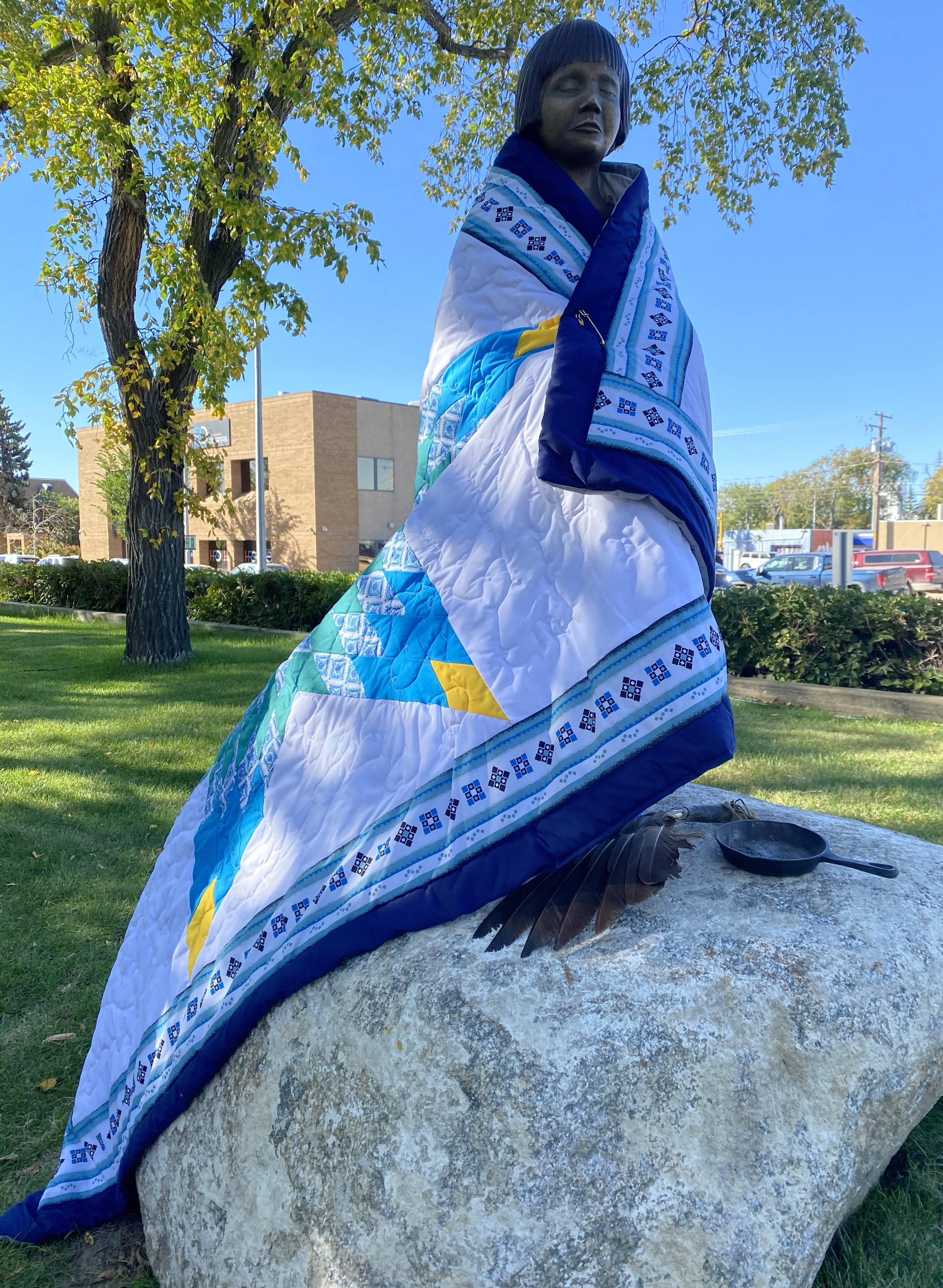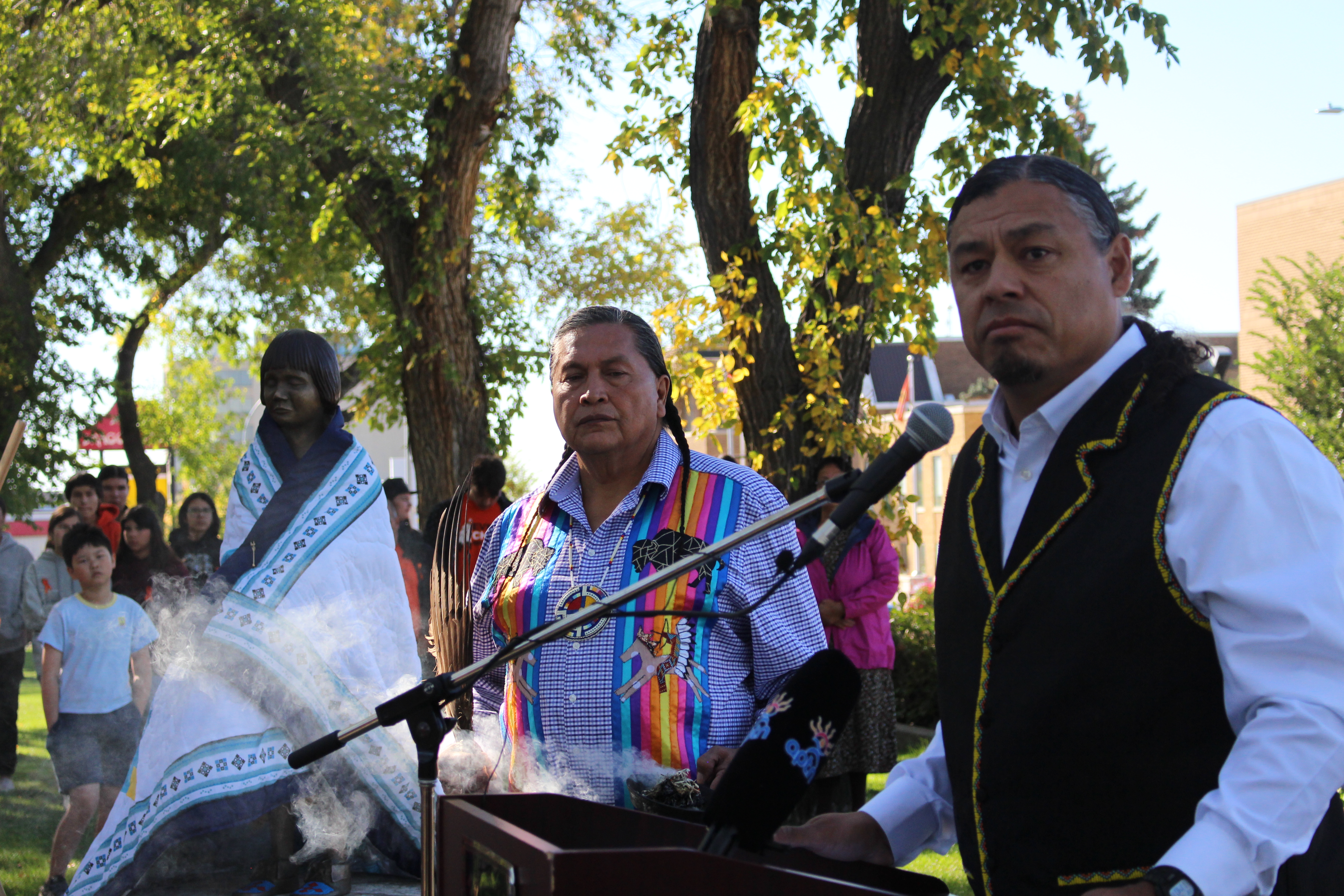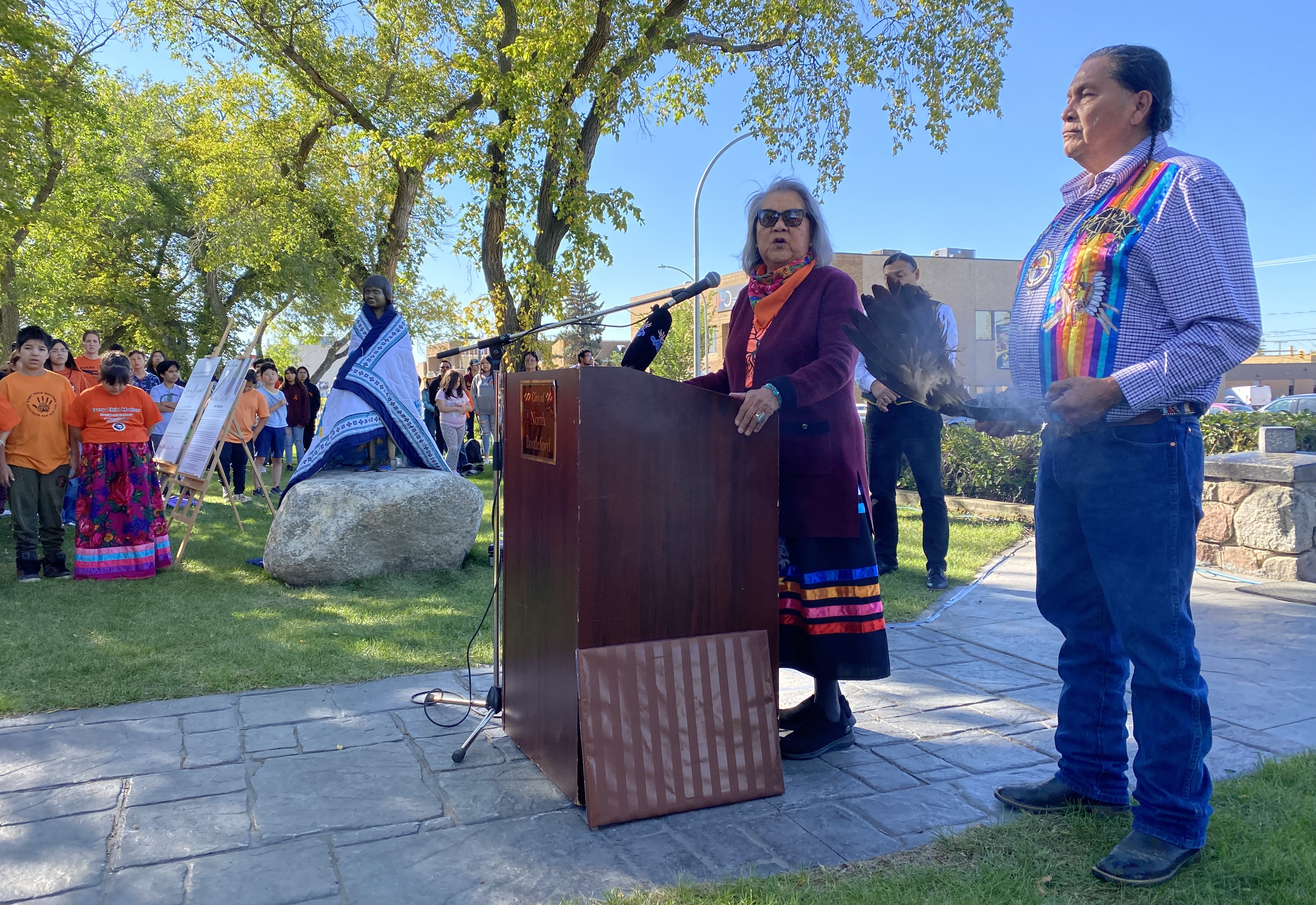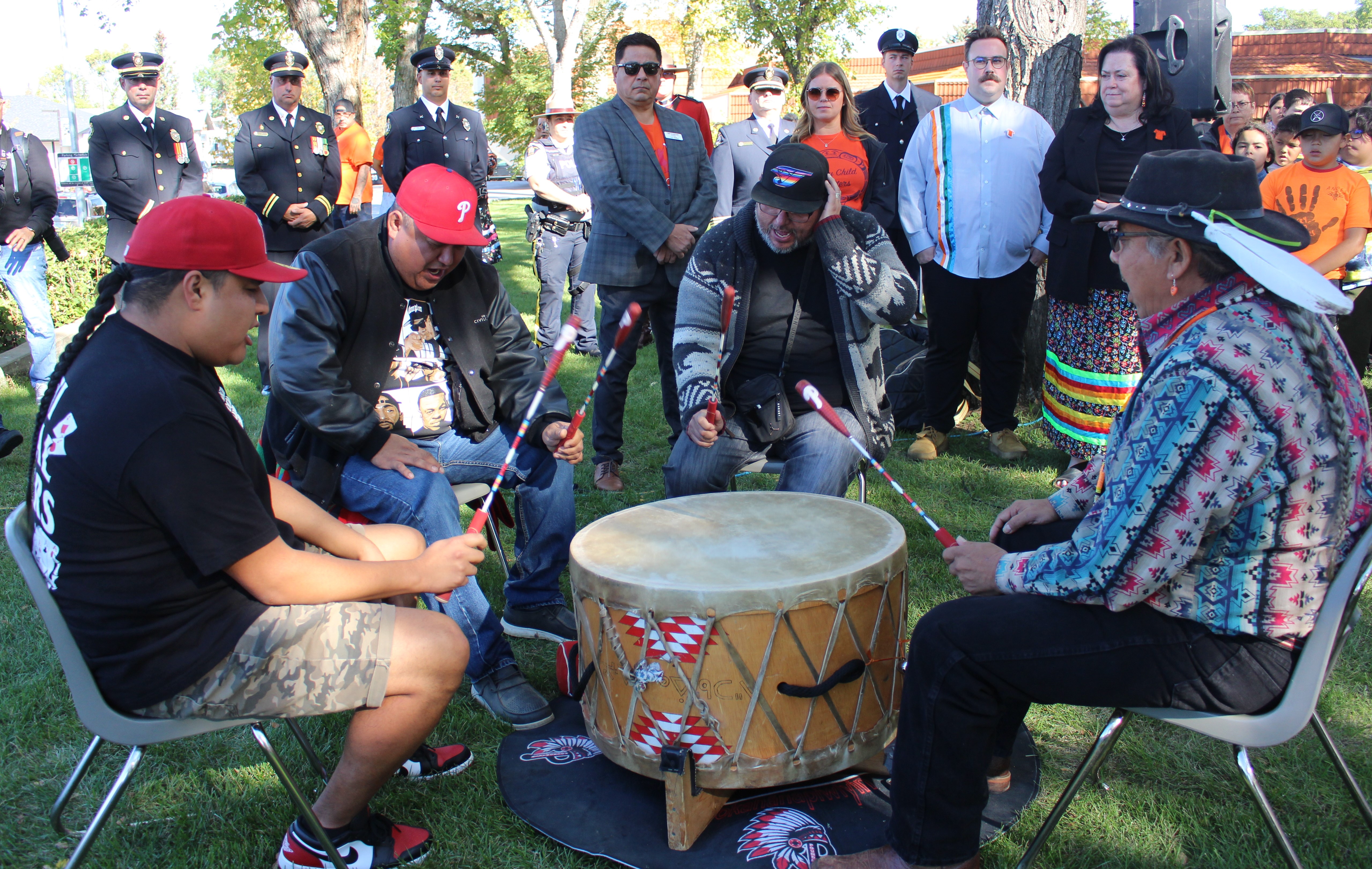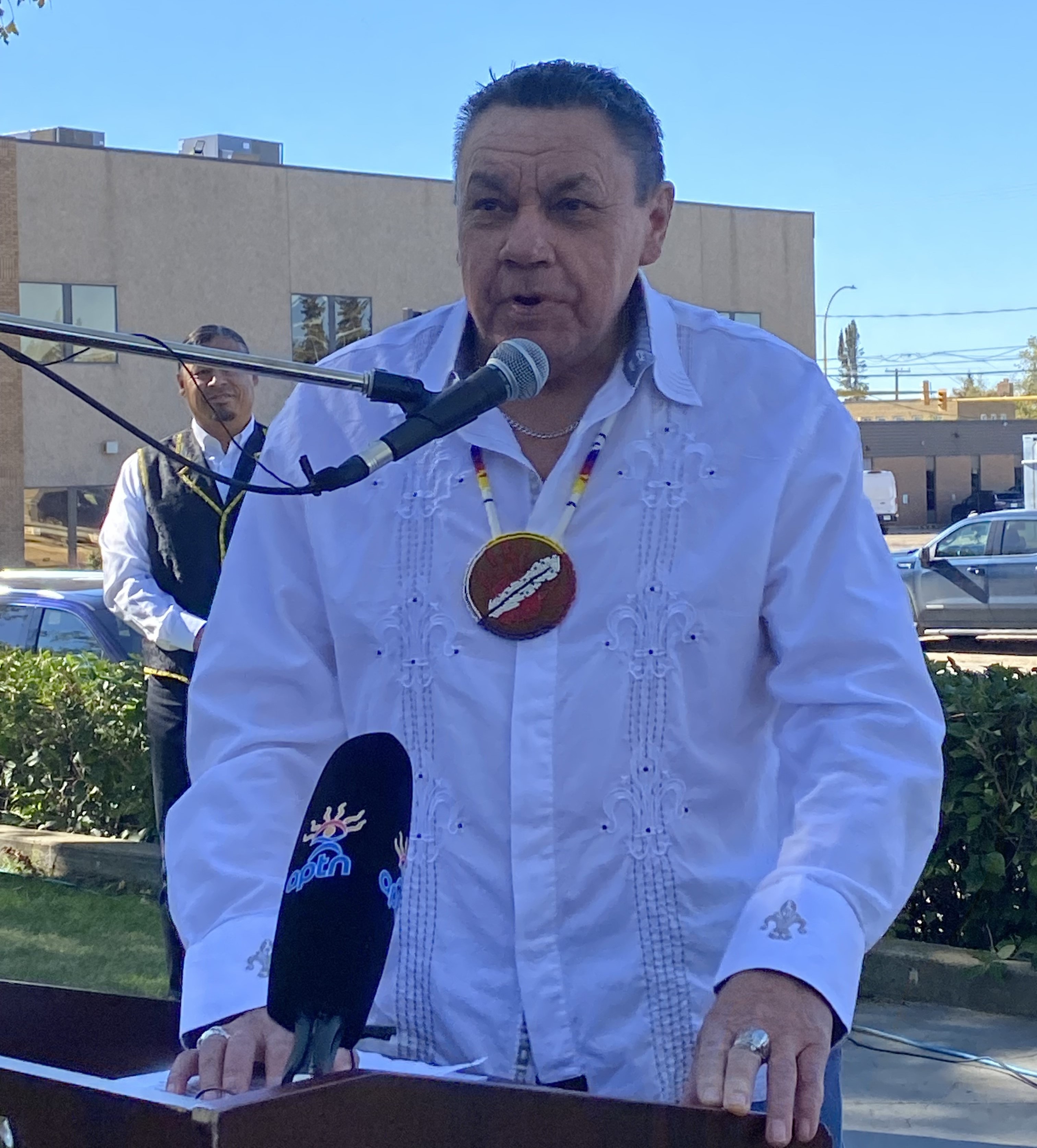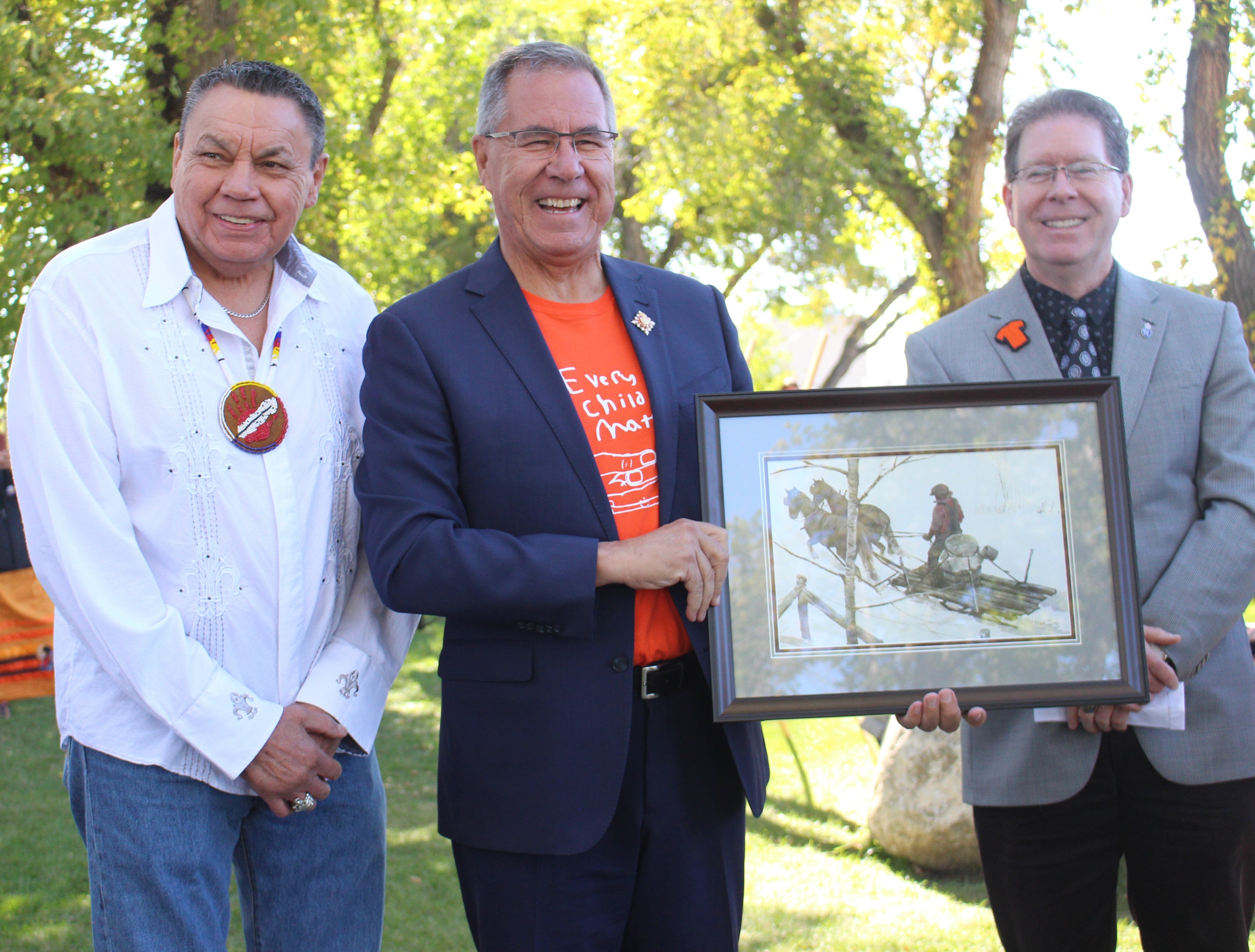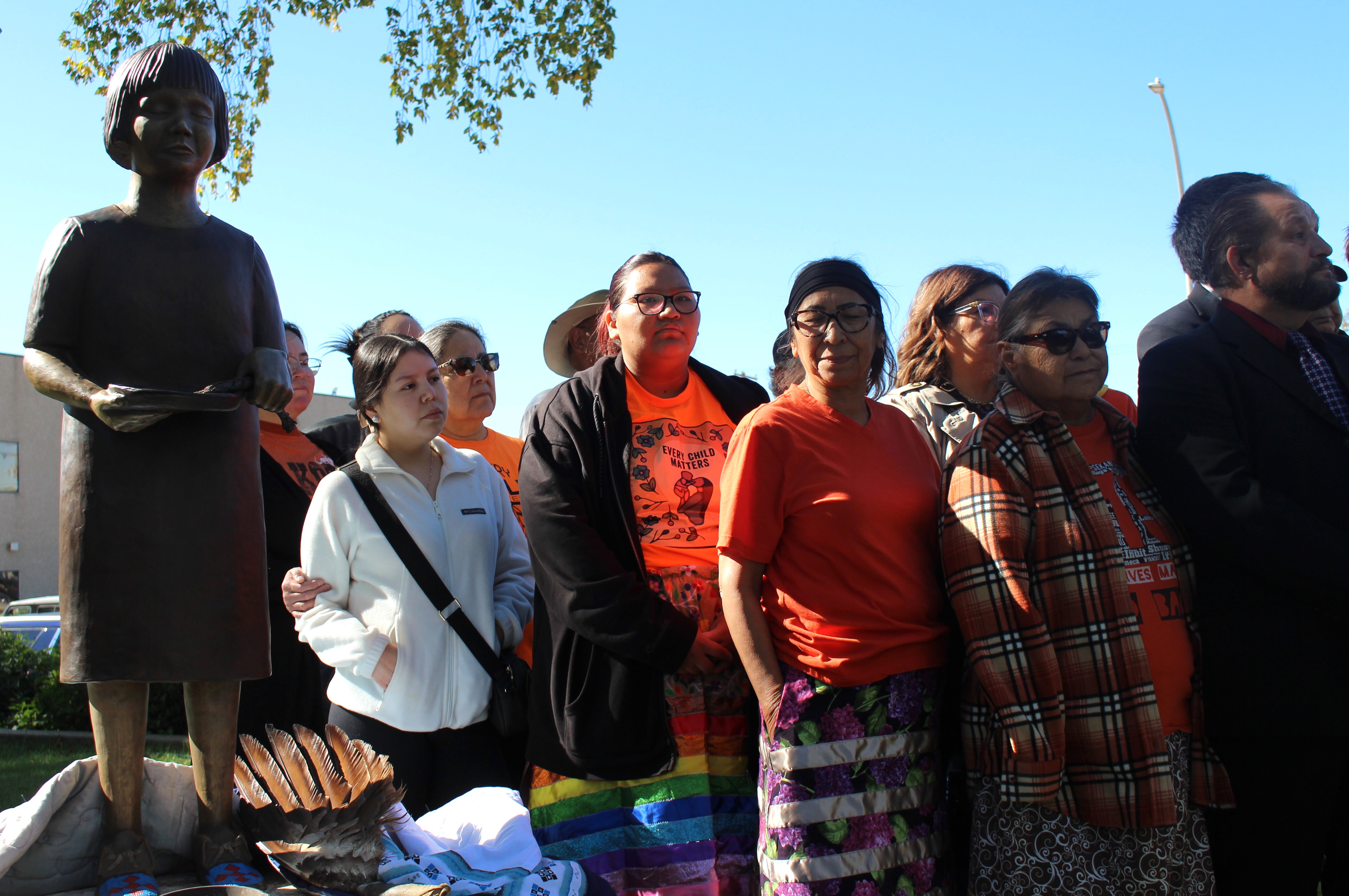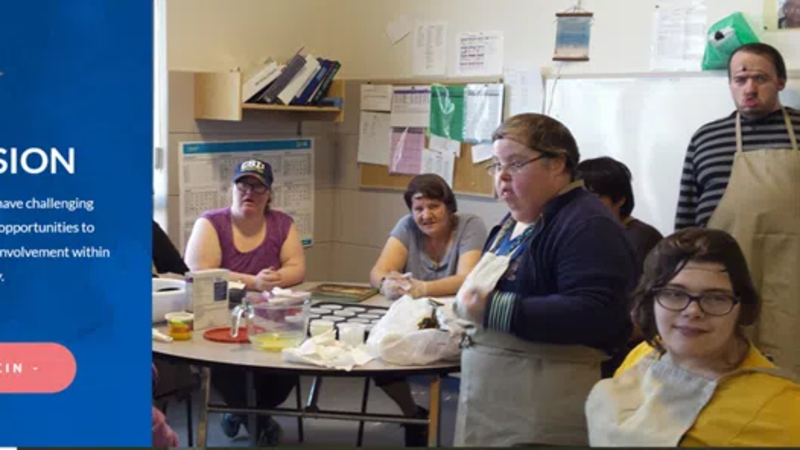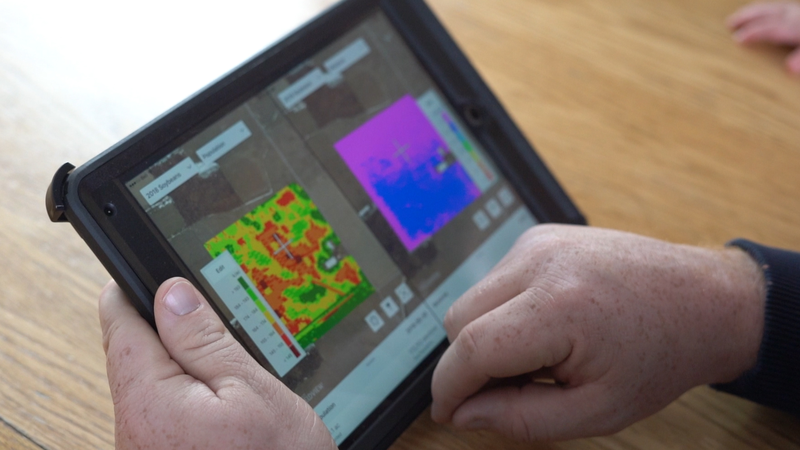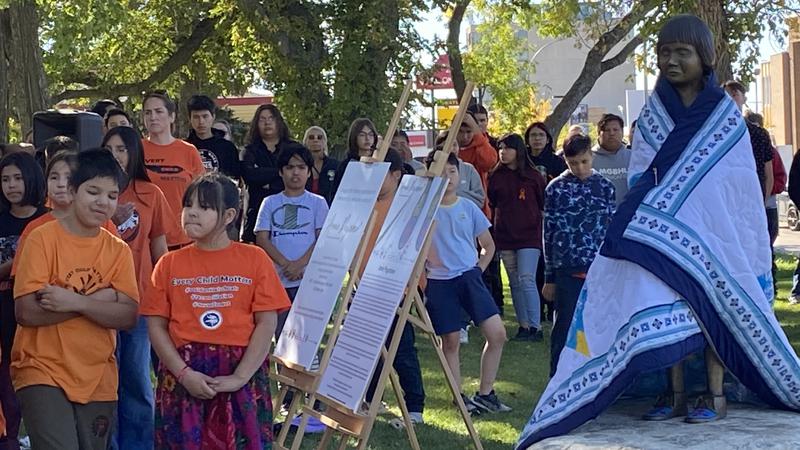
‘A way of hope and resilience’: Annie Peyachew statue unveiled in Central Park
At the entrance to a grassy grove in Central Park, a little girl stood on a boulder wrapped in a star blanket. As the mid-morning sunlight gently dappled the leaves of the overhanging trees in gold, the girl – no older than seven – maintained a serene expression on her sculpted bronze face.
Now, 110 years after the Battlefords Industrial School – Canada’s first federally funded residential school closed – former student Annie Peyachew has taken her place in North Battleford as a symbol of hope.
“It’s very emotional today, but I’m very happy at the same time,” said Sculpture Lionel Peyachew and Annie’s relative.
The artist, a member of Red Pheasant Cree Nation, explained that he never expected Friday’s event to draw so many out.

